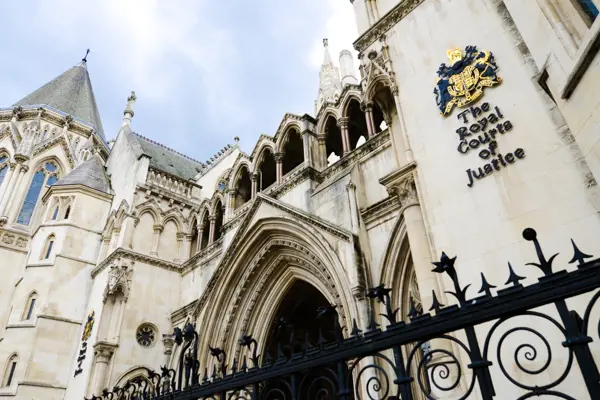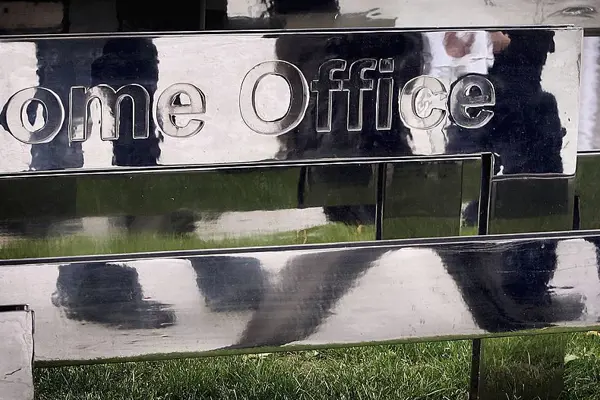Landmark judgment in the High Court as judge rules historic asbestos documents can be revealed
The High Court today ruled that documents which were to be destroyed following litigation can be shared with those not involved in the original litigation, in this case, lawyers fighting on behalf of victims of asbestos.
Posted on 05 December 2017
The landmark decision sets a precedent for all cases enabling vital documents to be made public outside of the litigation.
The Asbestos Victims Support Group Forum, represented by Harminder Bains, partner in the industrial disease team at Leigh Day, took the case to the High Court following a 6-week High Court trial which took place in the first two months of 2017.
The hearing was between Concept 70 Limited and Cape Distribution Limited and others (the Cape companies). Concept 70 Limited had previously paid employees compensation for contracting mesothelioma, a fatal asbestos related disease.
During the trial, Concept 70 Ltd sought a contribution of money from the Cape companies on the basis that its employees had used asbestos products manufactured by the Cape companies.
As a result of the litigation, the Cape companies were ordered to disclose thousands of documents which showed what the Cape companies knew about the dangers of exposure to asbestos. These were only revealed at this time to the two parties involved.
The case settled before judgment was given.
On 3 April 2017, after discovering that the case had reached a confidential settlement, Harminder Bains telephoned the solicitor representing Concept 70 Limited and requested confirmation as to how she could obtain the documents which had been disclosed during the trial, as she contended they were in the public domain and would help her clients in their claims against the Cape companies.
Ms Bains was advised that as part of the confidential settlement agreement the documents were to be destroyed, and that the destruction was imminent.
She advised that she had been instructed by the Asbestos Victims Support Group Forum UK to obtain the documents and requested that they not be destroyed. Concept 70’s solicitor said that he could not agree.
On 6 April 2017, an urgent application was made to the Royal Courts of Justice for the documents to be preserved and returned to the Court.
The Judge granted the application and the substantial hearing of the application took place between 9 to 12 October 2017 before her.
In summary, the Forum requested the Court to hand over the documents to them, on the basis that the documents were in the public interest.
Mr Dring, who brought the case on behalf of the Asbestos Victims Support Group Forum UK, in a statement to the Court said the documents “will greatly benefit victims of asbestos related diseases to prove their claims in negligence against Defendants…any assistance which these documents will provide in helping to establish negligence and thereby relieve the sufferers from spending time on their claims will be of an enormous benefit to them.”
Harminder Bains in her evidence to the Court said, “A number of Courts have accepted that exposure which happened to be lower than the numerical standards contained in Technical Data Note 13, (‘TDN13’ a health and safety standard relied on by Defendants), would have been a ‘safe’ or ‘acceptable’ level of exposure.
“The documents we seek will assist liability experts and the Courts to consider whether this is correct; how the numerical values contained in TDN13 came to be set and on what evidence they were based."
Ms Bains continued “What did Cape know about ‘safe’ levels of asbestos in the 1960s? …did the industry put profit before safety and did the [Factory Inspectorate] let them?”
Robert Weir QC, who was instructed by Ms Bains to represent the Forum at the hearing, stated at the October hearing: “It would be intolerable if judges in future cases were not to make their assessments based upon evidence which has been disclosed to a previous High Court Judge, if that evidence was established as being relevant and probative.”
During the 3-day hearing, Justin Fenwick QC who represented the Cape companies, suggested that the Forum and its legal team were acting as ‘predators’ and, in summary, requested the Court to reject the Forum’s application in its entirety.
However Master McCloud said in today’s judgment:
“A legitimate interest can include academic interest, use by a pressure group or use in some journalistic form and indeed any number of other uses which are ulterior (in the proper sense of that word) without being illegitimate.” [18]
“Mr Dring acts for a group which provides help and support to asbestos victims. It some respects it is also a pressure group and is involved in lobbying and in promoting asbestos knowledge and safety. Those are legitimate activities and provide legitimate interest.” [19]
“The intended use is to enable him and the forum of which he is an officer, to:
- make the material publicly available,
- by making it available to promote academic consideration as to the science and history of asbestos and asbestolux exposure and production,
- improve the understanding of the genesis and legitimacy of TDN13 and any industry lobbying leading to it in the 1960s and 1970s.
- understand the industrial history of Cape and its development of knowledge of asbestos safety
- clarify the extent to which Cape is or is not responsible for product safety issues arising from the handling of asbestolux boards
- to assist court claims and the provision of advice to asbestos disease sufferers. [20]
“Those are legitimate aims.” [21]
Upon hearing today’s judgment, Harminder Bains said:
“I am very pleased that these critical documents, that the asbestos industry has kept hidden for years, are now in the public domain. I cannot wait to read them, and hope they will expose what Cape knew about the dangers of asbestos.
“It will also allow all documents which are ordered to be disclosed in litigation to be made available for academic research, investigative journalism and for other lawyers to aid cases where a party has acted unlawfully.”
Graham Dring, of the Asbestos Victims Support Group Forum UK, said:
“These documents could also shed light on the close relationship between the Factory Inspectorate, whose function was supposed to be protecting the health and safety of workers, and the asbestos industry that they were supposed to be regulating. We need to know how and why the biggest industrial disaster to hit this country, one that has not yet played out, was allowed to happen.”
Counsel for the Forum were Robert Weir QC and Jonathan Butters from Devereux Chambers

